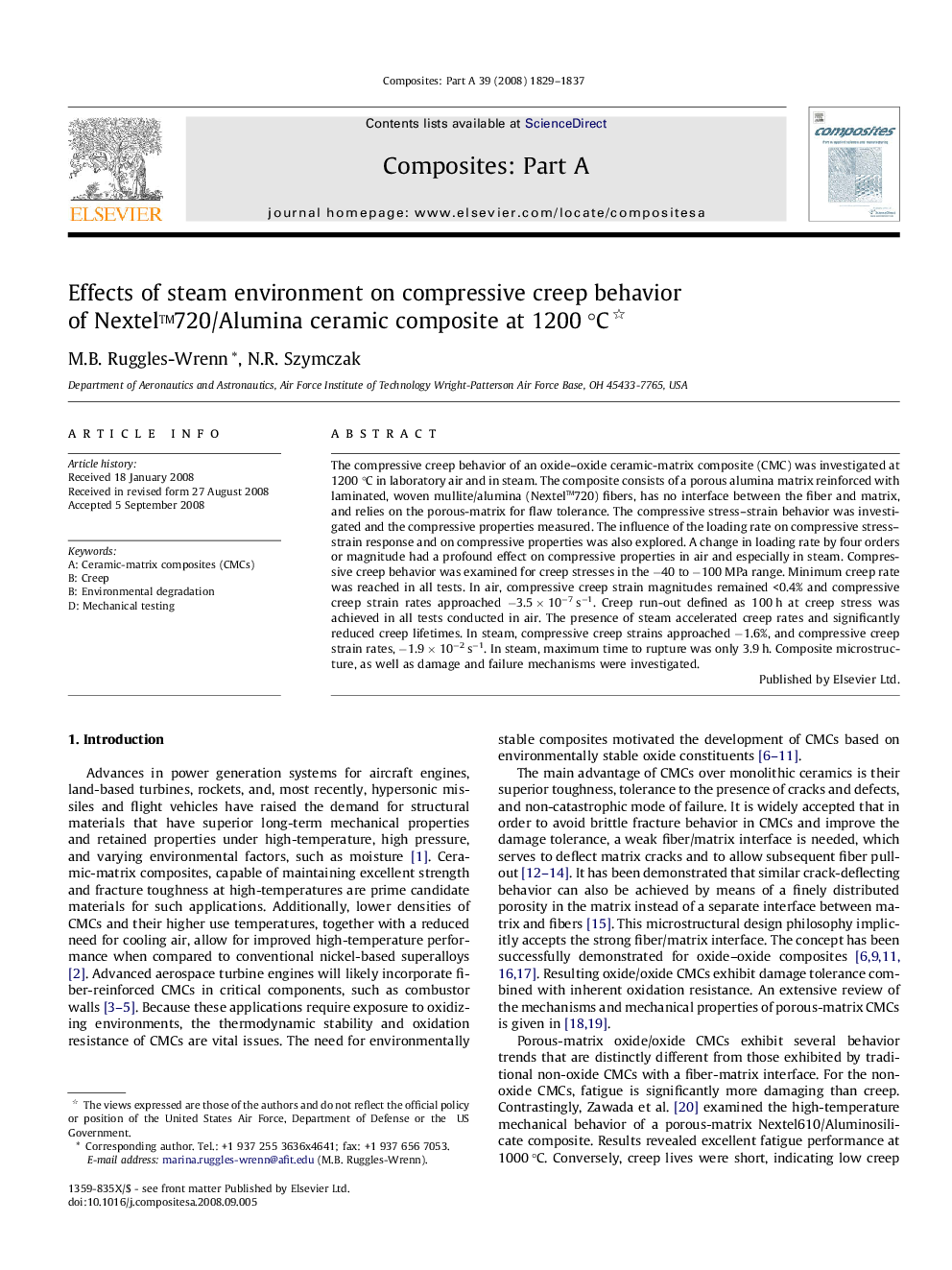| کد مقاله | کد نشریه | سال انتشار | مقاله انگلیسی | نسخه تمام متن |
|---|---|---|---|---|
| 1467317 | 990097 | 2008 | 9 صفحه PDF | دانلود رایگان |

The compressive creep behavior of an oxide–oxide ceramic-matrix composite (CMC) was investigated at 1200 °C in laboratory air and in steam. The composite consists of a porous alumina matrix reinforced with laminated, woven mullite/alumina (Nextel™720) fibers, has no interface between the fiber and matrix, and relies on the porous-matrix for flaw tolerance. The compressive stress–strain behavior was investigated and the compressive properties measured. The influence of the loading rate on compressive stress–strain response and on compressive properties was also explored. A change in loading rate by four orders or magnitude had a profound effect on compressive properties in air and especially in steam. Compressive creep behavior was examined for creep stresses in the −40 to −100 MPa range. Minimum creep rate was reached in all tests. In air, compressive creep strain magnitudes remained <0.4% and compressive creep strain rates approached −3.5 × 10−7 s−1. Creep run-out defined as 100 h at creep stress was achieved in all tests conducted in air. The presence of steam accelerated creep rates and significantly reduced creep lifetimes. In steam, compressive creep strains approached −1.6%, and compressive creep strain rates, −1.9 × 10−2 s−1. In steam, maximum time to rupture was only 3.9 h. Composite microstructure, as well as damage and failure mechanisms were investigated.
Journal: Composites Part A: Applied Science and Manufacturing - Volume 39, Issue 12, December 2008, Pages 1829–1837